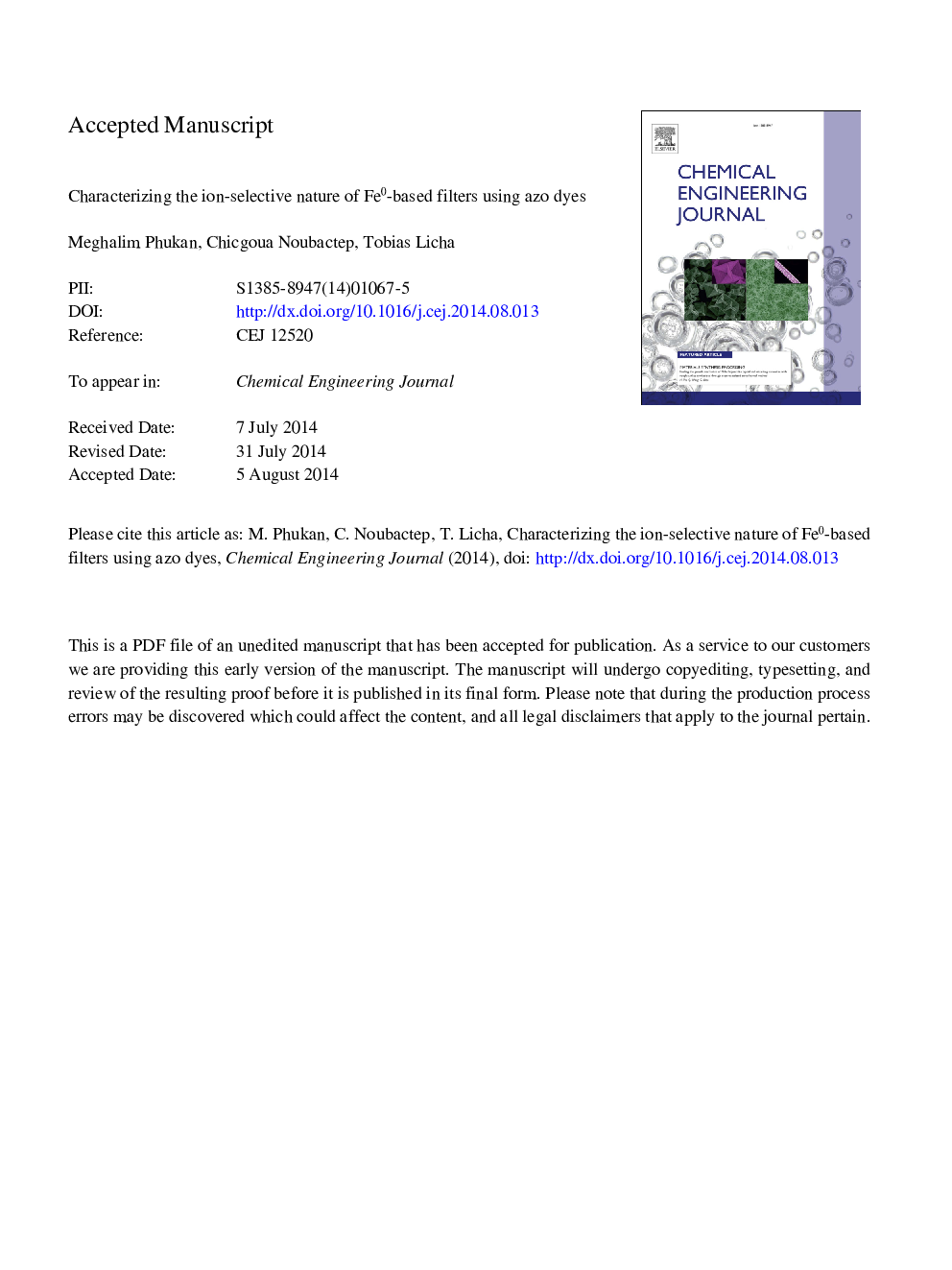| Article ID | Journal | Published Year | Pages | File Type |
|---|---|---|---|---|
| 6585865 | Chemical Engineering Journal | 2015 | 43 Pages |
Abstract
The effect of the ionic charge on the efficiency of Fe0/sand systems for dye discoloration was investigated in column studies. Tested systems for each dye were: (i) pure sand (0% Fe0), (ii) pure Fe0 (100% Fe0), and (iii) Fe0/sand (50% Fe0 - vol/vol). Tested dyes were methylene blue (MB - cationic), Orange II (anionic) and reactive red 120 (RR 120 - anionic). Used dye concentration was 31 μM and used Fe0 mass was 100 g. Each system was characterized by the time-dependent changes of the pH value, the iron breakthrough, the dye breakthrough, and the hydraulic conductivity (permeability). The experiments lasted for 93 days during which a total of 26.12 L of the dye solution flowed through each column (809.7 μM dye in total). No significance changes in pH value, Fe breakthrough and permeability could be documented. In pure sand systems (0% Fe0) 15, 21 and 140 μM of RR 120, Orange II and MB were discolored respectively. The discoloration efficiency in Fe0-based systems was 75% for MB and more than 95% for RR120 and Orange II. Results confirmed quantitative adsorptive MB discoloration and negligible adsorption of anionic dyes onto negatively charged sand. Quantitative discoloration of anionic dyes (Orange II, RR 120) in Fe0/sand systems was attributed to high affinities of both species to positively iron corrosion products. UV-vis spectra of effluent solutions revealed a quantitative chemical reaction of RR 120 in the Fe0/H2O system. The yellow-colored reaction products were not active in the range 800-200 nm and their breakthroughs were quantitative over the whole experimental duration. Results confirmed the ion-selective nature of the Fe0/H2O system and are regarded as a cornerstone for the design of next generation Fe0-based filtration systems.
Related Topics
Physical Sciences and Engineering
Chemical Engineering
Chemical Engineering (General)
Authors
Meghalim Phukan, Chicgoua Noubactep, Tobias Licha,
